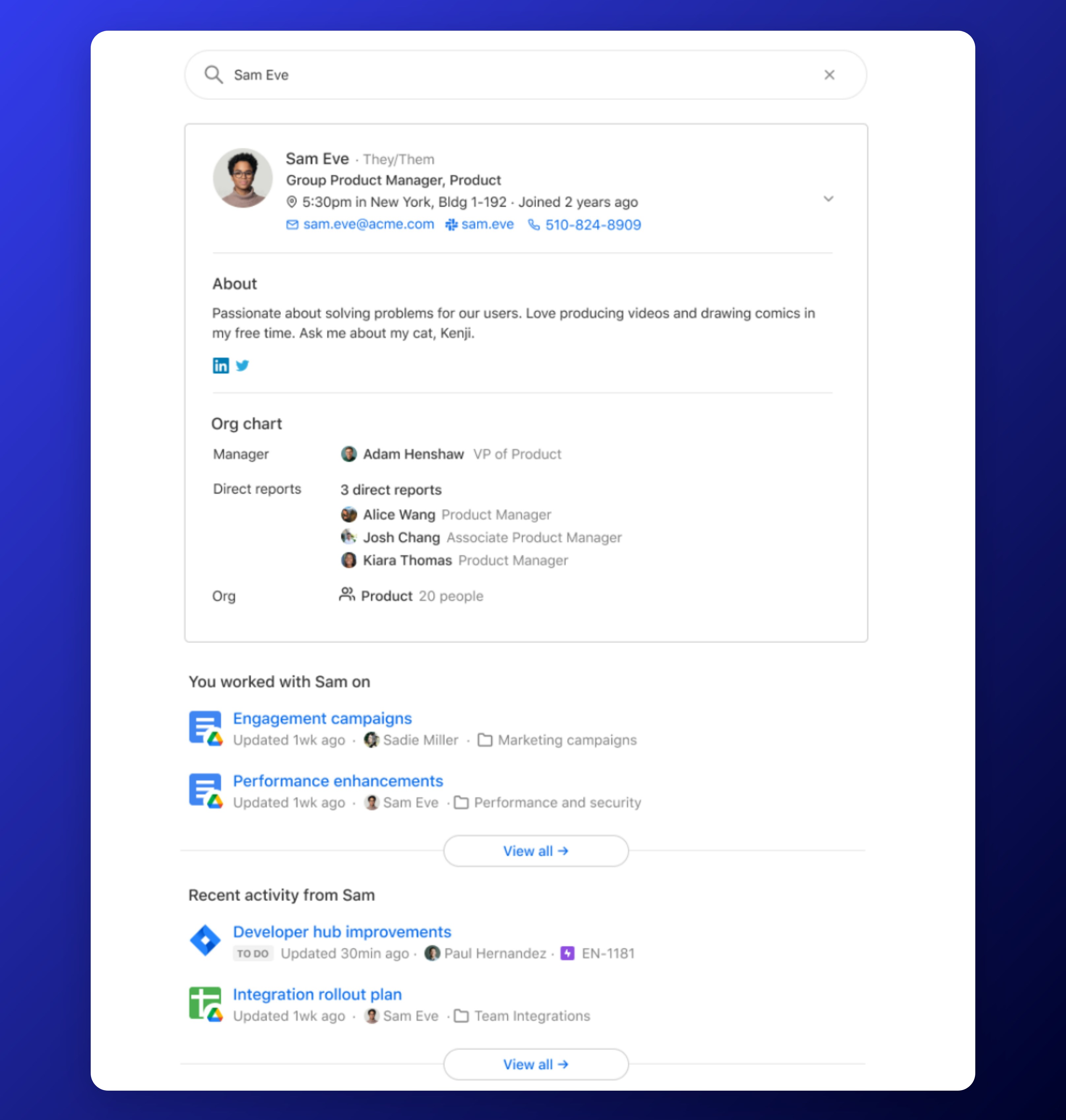Core Architecture
The Knowledge Graph is built on three fundamental pillars that work together to create a comprehensive understanding of your enterprise data:Content
Documents, messages, tickets, and other content types across your organization
People
User identities, roles, teams, and organizational relationships
Activity
User interactions, document history, and engagement patterns
Content Integration
Glean provides over 100 easy-to-use connectors, each specifically designed for different applications’ data models and API endpoints.
- Full content analysis (titles, body copy, comments, media)
- Metadata extraction (creator, creation time, update history, file type, folder structure)
- Permissions management
- Faceted search capabilities
Crawl Configuration
Permissions Control
Permissions Control
Configure access at the individual item level and specify inclusion/exclusion rules by asset IDs or item containers.
Crawl Strategy
Crawl Strategy
Adjust crawl parameters to match your organization’s needs:
- Customizable crawl frequency
- Blackout period settings
- Multiple crawl methodology options
People Intelligence
One in ten enterprise searches are people-related, making comprehensive people data crucial for effective enterprise search.

Glean's Knowledge Graph provides rich people insights
1
Unified Identity
Creates a consolidated view of each person across all connected applications.
2
Organizational Context
Maps relationships between roles, teams, tenure, and location.
3
Collaboration Insights
Identifies close collaborators and recent project involvement.
4
Customizable Profiles
Flexible data model that can be tailored to your organization’s needs.
Activity Tracking
Activity data is collected securely from connected applications to enhance search personalization and relevance.
- Teams
- Slack
- Plugins
- Chrome extension
Data Usage and Privacy
The activity information serves two primary purposes:Individual Personalization
Using activity and knowledge graph signals to customize outputs and improve search while maintaining strict user privacy. Individual data remains isolated to each user.
Collective Intelligence
Enhancing results for user groups through aggregated insights, with privacy thresholds ensuring data collection only occurs across multiple users.
Activity data never leaves your exclusive GCP project and is subject to strict data protection rules to ensure privacy.